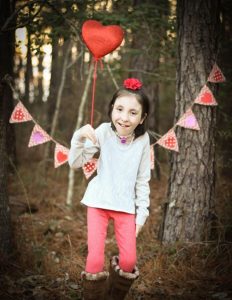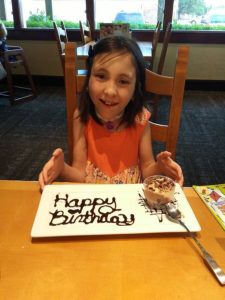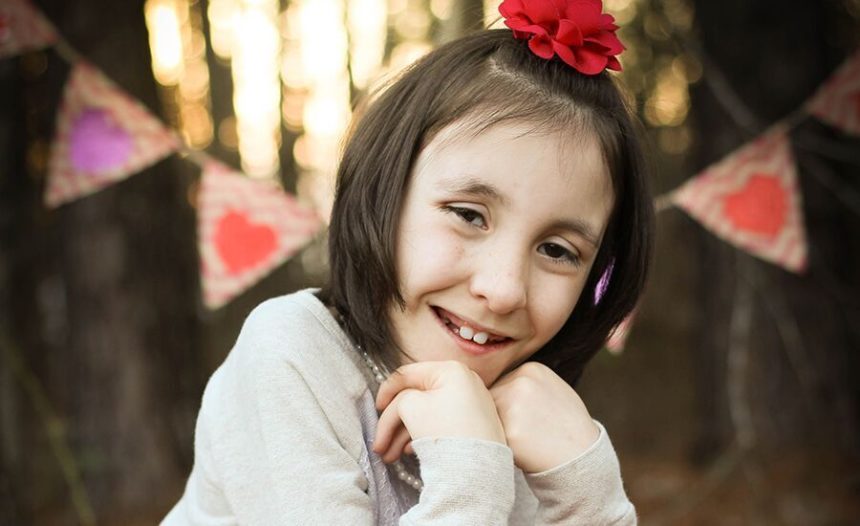Every morning, Avery Dixon wakes up, gets dressed and gets ready for the day. It’s the end of June, which means her home-school lessons have slowed down, and she can relax a little bit before hitting the books. After class, she calls her best friend on Skype; they met in public school before Avery left last year after her latest surgery. They play online games together, then Avery enjoys family time.
 That typical day for Avery looks a lot like a typical day for any 10-year-old, except that she lives with arthrogryposis multiplex congenita (AMC), a rare congenital disorder that causes multiple joint contractures, or joints with limited movement that cannot fully straighten or bend. AMC most commonly affects the hands, wrists, elbows, shoulders, hips, feet and knees. In Avery’s case, her feet and shoulders were affected the most, but all of her joints showed signs of contracture.
That typical day for Avery looks a lot like a typical day for any 10-year-old, except that she lives with arthrogryposis multiplex congenita (AMC), a rare congenital disorder that causes multiple joint contractures, or joints with limited movement that cannot fully straighten or bend. AMC most commonly affects the hands, wrists, elbows, shoulders, hips, feet and knees. In Avery’s case, her feet and shoulders were affected the most, but all of her joints showed signs of contracture.
Avery, of Raeford, was also diagnosed at birth with Pierre Robin sequence, a set of developmental abnormalities that include a small lower jaw (called micrognathia), a U-shaped palate and breathing problems caused by the tongue rolling back into the throat.
Avery had her first surgery when she was just hours old. She spent the first three months and five days of her life at the North Carolina Children’s Hospital’s Newborn Critical Care Center undergoing various procedures, including surgery to repair an umbilical hernia. She had a gastrostomy tube inserted to aid feeding and a tracheotomy to help her breathe.
As Avery got older, she lived, studied and played like any child. Today, she is fiercely independent, says her mom, Danielle Dixon.
“She can do everything herself other than wash her hair,” Dixon says. “And we’re trying to figure out a way to allow her to be able to do that on her own, too.”
Dealing with Constant Complications
 Avery has come a long way, but her first 10 years haven’t been easy.
Avery has come a long way, but her first 10 years haven’t been easy.
From the time she was very young, she’s dealt with a series of complications.
“Every growth spurt she has, her feet just want to turn back to that club position,” her mother says. When she was 2, Avery had additional orthopedic surgeries to correct the shape of her feet and had to wear casts on her legs to help her walk and learn to maintain her balance.
At 4 years old, Avery underwent a talectomy, in which the talus bones in the ankles are removed to help bring the feet to a 90-degree position and make walking easier. “We still struggle with her feet wanting to turn to that position, so we still do lots of night and day bracing,” Dixon says.
Then, at 5, Avery’s trach tube was finally removed—a moment the whole family celebrated. “The moment that we got the clear that the hole was closed and safe, we immediately went on a cruise two weeks later,” Dixon says.
During those early years, Avery’s doctors also closely monitored her back. “Because of the arthrogryposis, her ribs are rigid and her spine is very rigid,” Dixon says. “She’s always had a slight curve just because of the positioning in the womb, but we noticed that it started to curve a little bit more.” When she was 5, her orthopedic surgeon decided to start bracing Avery’s back to try to slow the progression of curvature in her spine.
“Bracing is a struggle. It was uncomfortable and painful for her, and we did the best we could keeping her in it as long as possible during the day,” Dixon says. “Looking back on all of this, I think I could have done better to make her be in it. But there’s a line between being compliant with doctor’s orders and letting your child be a child. We took the back brace off so she could go swimming or run around outside with her friends.”
An Unexpected Problem During Surgery
Over time, Avery’s spinal curvature—scoliosis—got worse and required surgery, which was supposed to take place last July. Doctors planned to put a rod in Avery’s back to stabilize it.
But after Avery went under anesthesia, the surgical team wasn’t able to get an airway open. They ended up performing an emergency tracheotomy.
Avery still has the trach tube from that emergency surgery, and Dixon says it won’t be coming out anytime soon. Her airway is narrow because of the Pierre Robin sequence, and her arthrogryposis and scoliosis make it difficult for her neck to move. That means in an emergency, surgeons wouldn’t be able to intubate her for another surgery.
“Day to day, she can breathe on her own,” her mother says. “But at this point, we can’t say whether she’s going to need another surgery, so she needs the trach for an airway for surgery.”
Because of the emergency tracheotomy, doctors delayed the surgery to place a rod in Avery’s back. It was successfully put in place in October. She had to wear a back brace during the day, but otherwise Avery was back to being a happy 10-year-old—minus the horseback riding, a favorite activity that is now too dangerous.
But just last Tuesday, Avery bent over to tie her shoes and the rod snapped. “She immediately knew something was wrong,” Dixon says. “She said if she didn’t move, it didn’t hurt. But if she moved, she would have a popping feeling, and I could actually hear the pop from outside her body.”
They went to the emergency room, where Avery’s orthopedic surgeon, Edmund R. Campion, MD, replaced the rod through the same incisions made during the insertion procedure and found that all of the screws and hooks, which attach the rod to Avery’s spine, were still intact.
Back to Life as a 10-Year-Old
 Now, Avery is recovering and wears her back brace 24 hours a day.
Now, Avery is recovering and wears her back brace 24 hours a day.
“There’s no coming out of it, except for bath time,” Dixon says. “But she is already back to her normal self. I know everyone probably brags on their kid about how great they are, but she really is such a great kid.”
Avery’s next venture is learning to play an instrument. She wants to play the violin, but after consulting with a music teacher about how that might work with her hands and limited range of motion, she decided to start with the cello.
Her mom is just happy to have her pursuing a passion.
“She’s going to start those lessons soon,” Dixon says. “Avery would be totally happy playing her video games and watching movies all day, but like any 10-year-old girl, she needs a hobby.”
Sign up for our UNC Health Talk newsletter to read more inspiring stories and to get health tips delivered right to you.

